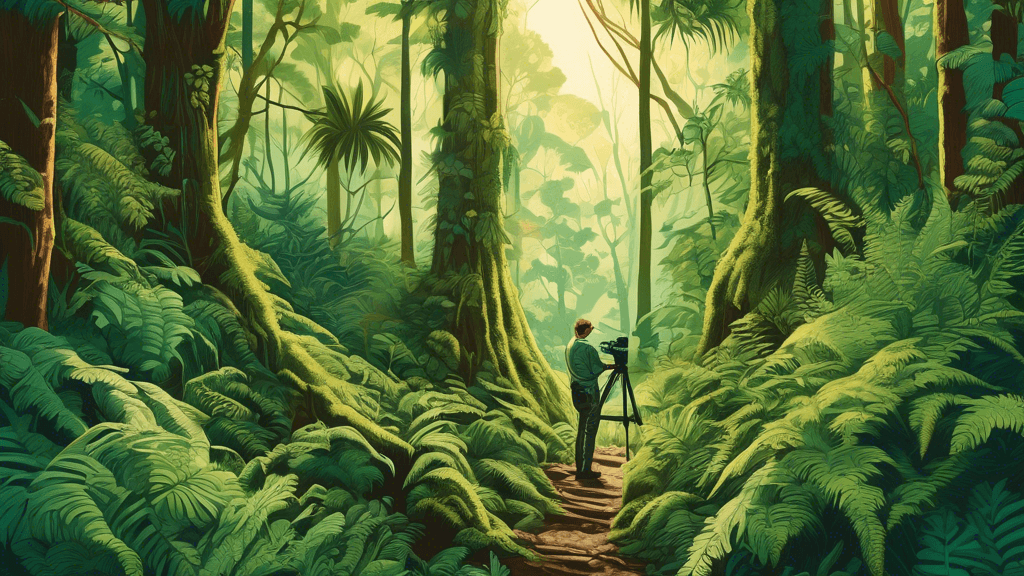
Mastering Forest Photography: Tips for Shooting Aotearoa's Lush Canopies
Share
Introduction to Forest Photography in Aotearoa
Aotearoa, with its lush forests and stunning green canopies, offers a unique challenge for photographers. Mastering the art of forest photography in such a vibrant setting is not only about capturing images but about conveying the spirit of the landscape. What makes Aotearoa's forests stand out, and how can you capture their essence effectively?
Understanding Forest Light Dynamics
Light in forested environments behaves differently than in open landscapes. Aotearoa’s dense canopies create a play of light and shadow that can both enchant and challenge a photographer. How can you use these lighting conditions to your advantage?
Working with Diffused Light
One of the key characteristics of forest light is its quality of being diffused through leaves and branches. This soft, scattered light can reduce harsh contrasts and give your photos a serene quality. But, have you ever considered the best time to capture this magical lighting?
- Early morning and late afternoon are ideal. The low angle of the sun during these hours enhances the textures and the layers of the forest.
- Overcast days offer perfect conditions by providing even lighting and bringing out the vibrancy of greens in Aotearoa’s forests.
Controlling Shadows and Highlights
In any photograph, managing contrasts between light and dark areas is crucial. In forest settings, this becomes a dynamic play of shadows and highlights. How can you use this to add depth to your images?
Employing exposure bracketing is a strategic move. By taking multiple shots of the same scene at different exposures, you can later blend these images during post-processing to achieve a balanced exposure throughout the scene.
Composition Techniques in Forest Photography
Composition in forest photography can be complex due to the chaotic nature of wilderness. What strategies can help you turn a potentially cluttered forest scene into a compelling photograph?
Using Natural Lines and Shapes
Forests are filled with natural lines – think tree trunks, branches, and streams – which can guide a viewer's eye through the image. How effectively are you using these elements to enhance your compositions?
Focus on Depth
Creating depth helps in drawing the viewer’s eye into the scene. Techniques like using a wide aperture to focus on a close subject while blurring the background (bokeh effect) can emphasize depth. Another technique is to use a smaller aperture to keep the entire scene sharply in focus, which is ideal for capturing the grandeur of expansive forest canopies.
Color and Texture – Bringing Aotearoa’s Forests to Life
The lush greens of Aotearoa's forests provide a rich tape for photographers. But capturing their true hue and texture can be tricky.
To bring out the rich hues and intricate textures of the forest, paying attention to color balance and saturation is crucial, notes CameraLens Editorial Photographer, Emily White. How you process your photos can greatly affect their mood and realism.
- Enhancing Green Tones: Adjusting the vibrancy and saturation levels can help in accentuating the lushness of the foliage.
- Detailing Textures: Using techniques like HDR (High Dynamic Range) photography can also highlight the detailed textures of bark, leaves, and undergrowth, adding a tactile element to your photos.
Conservation through the Lens
Photography is not just about capturing beauty but also about conservation. How can your forest photographs contribute towards environmental awareness?
By focusing on the diverse ecosystems within Aotearoa's forests and highlighting the intricacies of these environments, photographers can play a crucial role in educating and inspiring people to appreciate and protect these natural treasures.
Final Thoughts
Forest photography requires patience, practice, and a deep love for nature. Each trip into the woods may bring new challenges, but also new opportunities to capture the unique beauty of Aotearoa's ancient landscapes. What steps will you take to improve your forest photography skills and contribute to conservation efforts?
Remember, every photograph tells a story. Let your forest photographs tell a story of awe, beauty, and conservation. Take your camera, respect the environment, and capture the spirit of Aotearoa’s forests!





